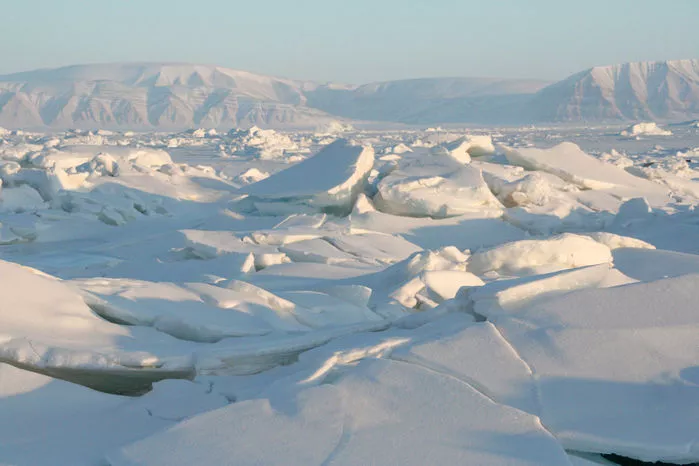Soot: it’s bad for human health, and bad for the health of the Earth, too. According to new research, it’s speeding up the loss of sea ice in the Arctic—ice that is vital to keeping the Earth cool. The Arctic’s summer covering of sea ice fell 30 percent over the last thirty years, and researchers expect that downward trend to continue. Scientists say that CO2 emissions account for much of the ice loss. But soot plays a role as well, and it might be easier to control.
How much is soot contributing to the problem? More than we thought, according to Mark Jacobson at Stanford University. It works like this: as sea ice melts, larger areas of open water absorb heat and add to ice melt. Soot falls on sea ice and amplifies that effect by making the ice surface darker and less reflective. “Black carbon over snow absorbs not only sunlight coming down but also sunlight reflected off of snow and ice coming back up,” Jacobson said. His study, published last summer in Journal of Geophysical Research, showed that soot particles are second only to greenhouse gases in the decline of Arctic sea ice.
People put black carbon, or soot, in the air when they burn carbon-rich fuels like oil, wood, or dung. And once in the atmosphere, the black carbon doesn’t stay put. Winds and storms carry the particles for hundreds or thousands of miles, so that even the pristine Arctic gets coated in a dirty layer of soot. Whether floating in the air or settled on the ice, the dark particles absorb sunlight, heating up the air around them or the ice beneath them. So all this soot might explain why the Arctic ice cover has been melting at a pace so much faster than climate researchers predicted.
Could reducing soot help reduce sea ice loss? Greenhouse gases like carbon dioxide hang around in the upper atmosphere for hundreds of years, so cutting emissions wouldn’t have an immediate effect. Soot, on the other hand, is made up of small particles, like tiny grains of dust, and it falls out of the air in a much shorter time frame. Reducing soot emissions would quickly reduce the amount of soot in the atmosphere and on sea ice.
References
Jacobson, M. Z. 2010. Short-term effects of controlling fossil-fuel soot, biofuel soot and gases, and methane on climate, Arctic ice, and air pollution health. Journal of Geophysical Research 115, D14209, doi:10.1029/2009JD013795
Jacobson, M. Z. 2004. Climate Response of fossil fuel and biofuel soot, accounting for soot’s feedback to snow and sea ice albedo and emissivity. Journal of Geophysical Research, 109, D21201, doi:10.1029/2004JD004945.
Ramanathan, V. and G. Carmichael. 2008. Global and regional climate changes due to black carbon. Nature Geoscience 1: 221-227.
Stroeve, J., M. M. Holland, W. Meier, T. Scambos, and M. Serreze. 2007. Arctic sea ice decline: Faster than forecast. Geophysical Research Letters 34, L09501, doi:10.1029/2007GL029703.

